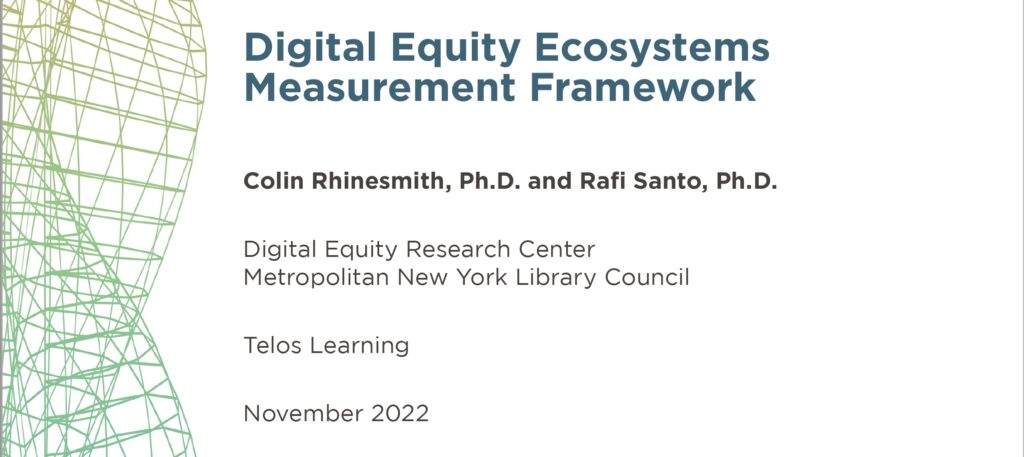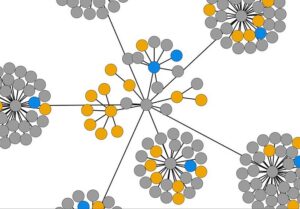The Digital Equity Research Center at the Metropolitan New York Library Council published a new report today, titled “Digital Equity Ecosystems Measurement Framework” which I co-authored with my wonderful colleague Dr. Rafi Santo, Principal Researcher at Telos Learning.
As our press release explains,
The report presents findings from a participatory research project with thirty-two digital equity and digital justice coalition leaders from across the United States, who contributed their ideas to inform the Digital Equity Ecosystems Measurement (DEEM) framework.
This initiative responds to a broader need within the digital equity field for conceptual frameworks and measurement tools to assist local coalitions in gathering data for planning, improvement, and advocacy purposes.
At the end of the report, we provide a list of recommendations for the following stakeholder groups who we believe could benefit from the report’s findings: state broadband and digital equity offices, National Telecommunications and Information Administration, philanthropic organizations, academic researchers, and community members.
I am incredibly grateful to Rafi Santo for his brilliant insights, which played an enormous role in developing and shaping the outcomes from this project. Thanks also to the National Digital Inclusion Alliance for their collaboration and support.
I am also grateful to Nate Hill, Executive Director of METRO for his support, as well as to the following individuals for their additional assistance and support: Davis Erin Anderson, Meghan McDermott, Angela Siefer, Aaron Schill, Kathy Fall, Houman Saberi, Leon Wilson, Lauren Moore, Lynn Thurston, Munirih Jester, Bruce Clark, Chrissie Powell, Rebecca Gibbon, Hillary Kolos, and Aaron Deacon.
Many thanks also to Tony Murray who did an amazing job designing the report.
The Digital Equity Ecosystems Measurement Framework report is supported with federal American Rescue Plan Act funds allocated to the New York State Library by the U.S. Institute of Museum and Library Services.


